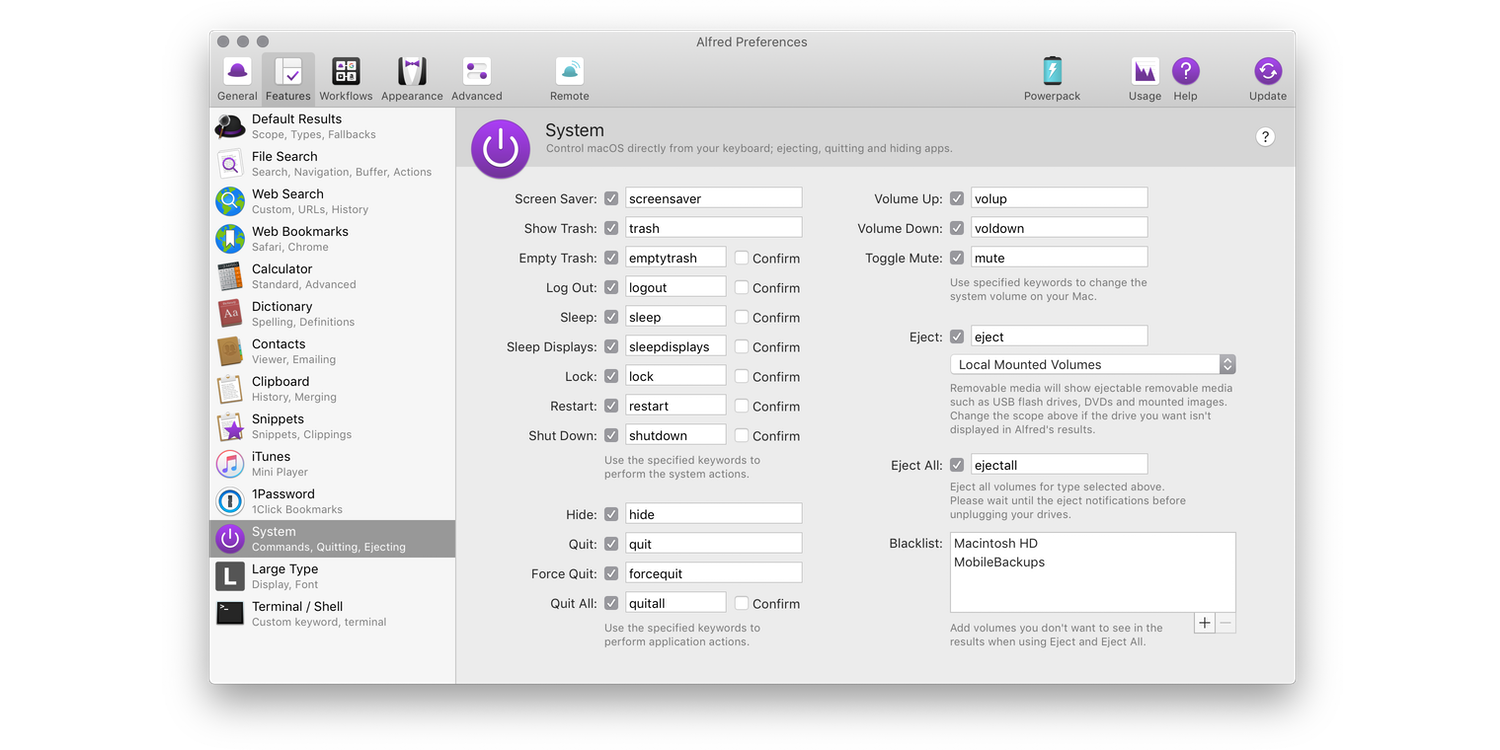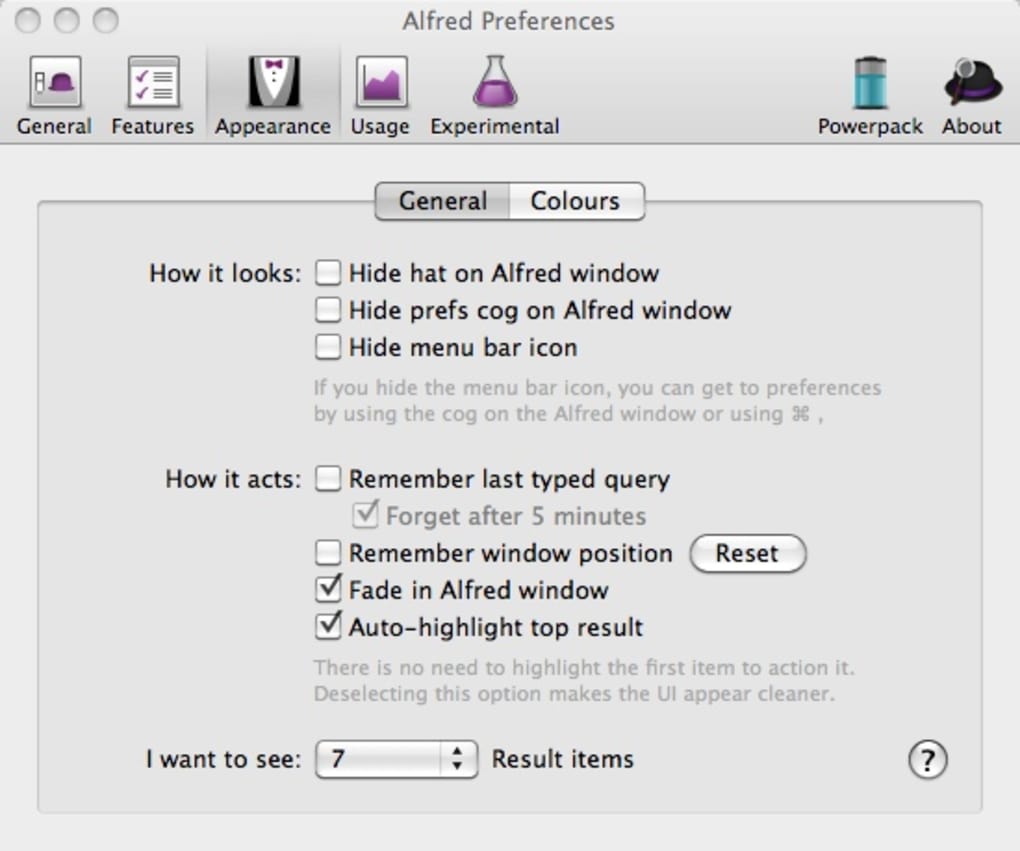

#ALFRED MAC OS BLUETOOTH#
This is similar to the process of pairing a Bluetooth device, except that it’s all done over Wi-Fi. It’s important to note that Alfred Remote is not a standalone app you also need to have Alfred 2.6 or higher running on the Mac you want to control.Īlfred Remote for iOS lets you launch things and initiate workflows on your Mac from your iOS device.Īfter installing Alfred Remote on your iOS device, you need to pair it with Alfred on your Mac. Now, Alfred has a new assistant called Alfred Remote-a $5 iOS version of Alfred that lets you control your Mac from your iPhone, iPad, or iPod touch.
#ALFRED MAC OS DOWNLOAD#
You can build your own workflows if you’re so inclined, or download Alfred workflows that other users have shared.Ĭreate your own Alfred workflows to make these shortcuts more efficient.Īlfred has become so ingrained into my workflow that I find it painful to work on a Mac without it. These are multi-step actions that can include AppleScripts, shell scripts, Ruby or Python code, and so on. But probably the most important Powerpack feature is the ability to create workflows. This unlocks more advanced capabilities such as searching your contacts, accessing your clipboard history, controlling iTunes playback, and integrating with 1Password. This is a good place to start, but if you want to squeeze the most out of Alfred, you need to buy the Powerpack. (Note: An older version exists on the Mac App store, but it lacks some new enhancements and is not compatible with the newly released Alfred Remote app for iOS that’s described further.) The app includes several basic features, including the app launcher, Web search, calculator, and dictionary actions.
#ALFRED MAC OS FREE#
The more you use it, the more Alfred learns about you in order to help you work more quickly and efficiently.Īlfred 2.6 is available as a free download from the developer’s website. Almost anything that’s stored on your Mac is fair game for Alfred. Not only can you launch apps this way, but you can open files, folders, emails and contacts, perform web searches, copy/move files and folders, and a whole host of other actions. Either hitting the Return key or selecting a Command-key option will open the selected item. As you begin typing the name of the app you want to open, Alfred starts displaying matches, narrowing down the list as you continue to type. Rather than clicking on an icon in your dock or rummaging through your Applications folder, you simply type a key-combination (Cmd+Space, in my case) to bring up a text input window. Yes, Alfred is an app-launching tool, but it can do so much more.Īt its most basic, Alfred is an app-launching utility.

I’ve tried all of them and, while all have their merits, I eventually landed on Alfred by Running With Crayons and haven’t looked back. But when developer support fragmented, other apps like Launchbar and even Apple’s own Spotlight moved in to stake a claim. Quicksilver was one of the first of these utilities, and I was a big fan. So, it seems ironic that there’s a relatively new category of Mac productivity apps that lets us control our Macs from the keyboard.

The introduction of the Macintosh back in 1984 helped release us from the bondage of the command-line interface.


 0 kommentar(er)
0 kommentar(er)
